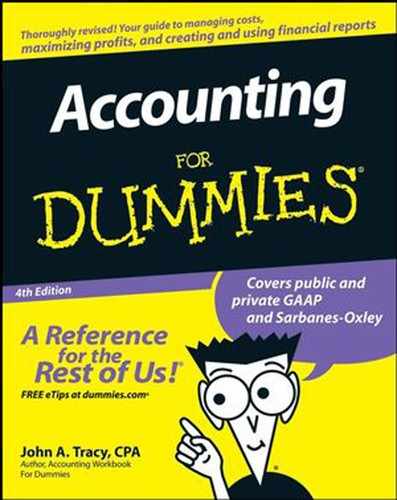6.6. Being an Active Reader
Your job is to ask questions (at least in your own mind) when reading a financial statement. You should be an active reader, not a ho-hum passive reader, in reading the statement of cash flows. You should mull over certain questions to get full value out of the statement.
The statement of cash flows reveals what financial decisions the business's managers made during the period. Of course, management decisions are always subject to second-guessing and criticizing, and passing judgment based on reading a financial statement isn't totally fair because it doesn't capture the pressures the managers faced during the period. Maybe they made the best possible decisions in the circumstances. Then again, maybe not.
One issue, in my mind, comes to the forefront in reading the company's statement of cash flows. The business in our example (see Figure 6-2) distributed $750,000 cash from profit to its owners — a 44 percent payout ratio (which equals the $750,000 distribution divided by its $1,690,000 net income). In analyzing whether the payout ratio is too high, too low, or just about right, you need to look at the broader context of the business's sources of and needs for cash.
The company's $1,515,000 cash flow from operating activities is enough to cover the business's $1,275,000 capital expenditures during the year and still leave $240,000 available. The business increased its total debt $250,000. Combined, these two cash sources provided $490,000 to the business. The owners also kicked in another $150,000 during the year, for a grand total of $640,000. Its cash balance did not increase this amount because the business paid out $750,000 dividends from profit to its stockholders. So, its cash balance dropped $110,000.
If I were on the board of directors of this business, I certainly would ask the chief executive why cash dividends to shareowners were not limited to $240,000 in order to avoid the increase in debt and to avert having shareowners invest additional money in the business. I would probably ask the chief executive to justify the amount of capital expenditures as well. Being an old auditor, I tend to ask tough questions and raise sensitive issues.
Would you like to hazard a guess regarding the average number of lines in the cash flow statements of publicly owned corporations? Typically, their cash flow statements have 30 to 40 or more lines of information by my reckoning. So it takes quite a while to read the cash flow statement — more time than the average investor probably has available. You know, each line of information in a financial statement should be a useful and relevant piece of information. In reading many statements of cash flows over the years, I have to question why so many companies overload this financial statement with so much technical information. One could even suspect, with some justification, that many businesses deliberately obscure their statements of cash flows.
